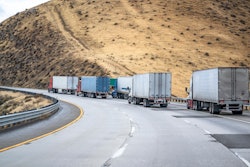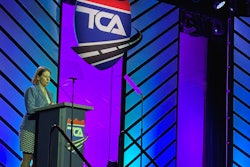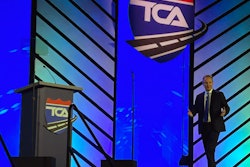The Environmental Protection Agency on Friday set strict emissions standards for heavy-duty trucks covering model years 2027 through 2032.
The new rules are somewhat more strict than those proposed last year. For example, motor carriers will have more time (2027-2030) to build out a zero-emissions infrastructure, but the flip-side is stronger emissions limits in 2031 and 2032. The proposed rule, by 2032, sought to get 50% of vocational vehicles like buses and waste haulers to zero emissions; 35% of new short-haul regional tractors; and 25% of new long-haul trucks – figures that called for more than 40% of all heavy-duty trucks to be zero emissions for trucks in the six model years. Under the 1,155 page final rule, roughly 30% of heavy-heavy-duty vocational trucks would need to be zero-emission by 2032 and 40% of regional day cabs.
[Related: Consumer protections included in Phase 3 EPA rule]
The EPA Phase 3 rule does not specify any particular emissions solution in its rules, maintaining its promise of a "technology-neutral" approach. However, it will be difficult to hit emissions benchmarks without some integration of either hybrid, battery-electric, or hydrogen-electric trucks.
"Given the wide range of operations required of our industry to keep the economy running, a successful emission regulation must be technology neutral and cannot be one-size-fits-all," said American Trucking Associations (ATA) President and CEO Chris Spear, adding ATA opposes the rule in its current form because the post-2030 targets remain "entirely unachievable given the current state of zero-emission technology, the lack of charging infrastructure and restrictions on the power grid. Any regulation that fails to account for the operational realities of trucking will set the industry and America’s supply chain up for failure.”
Truckload Carriers Association President Jim Ward noted that the industry has effectively reduced NOx and Particulate Matters through the evolution and implementation of new technologies and remains committed to being a good steward of the environment, but "the journey ahead provides for many alternatives to be considered to lower carbon such as blended biodiesel, renewable natural gas, diesel-electric, just to name a few to help us bridge the gap to the future. We cannot just sit idly by and watch the implementation of a policy that will have a significant impact on our members business.”










